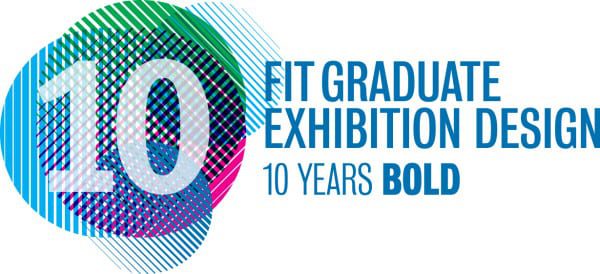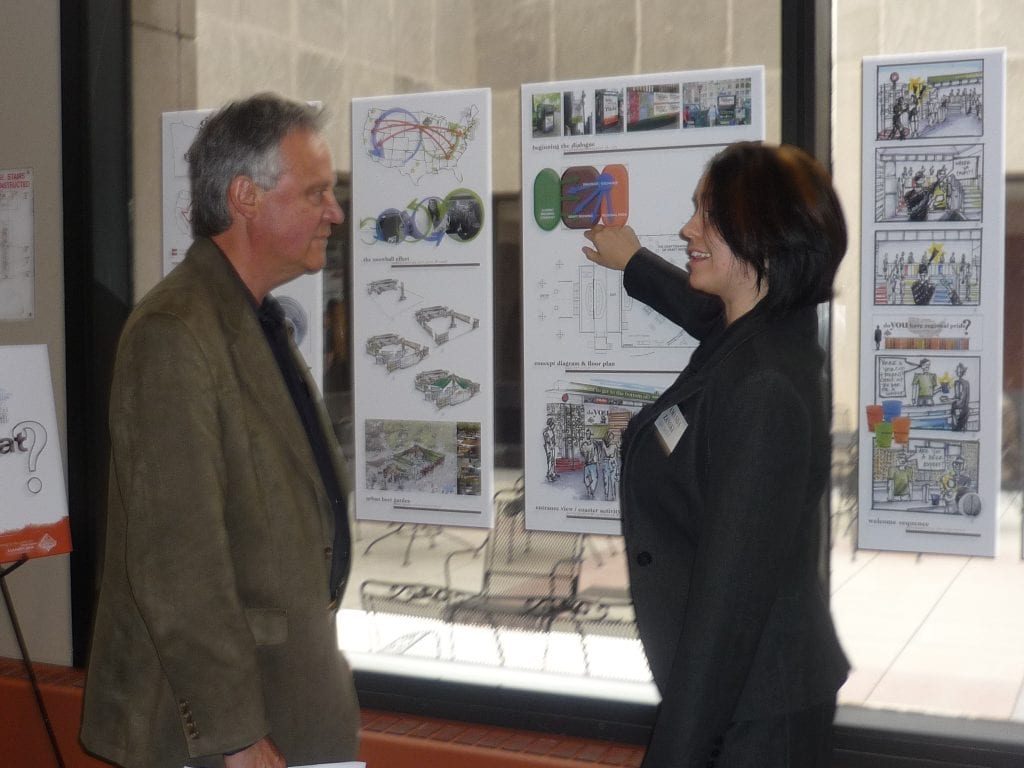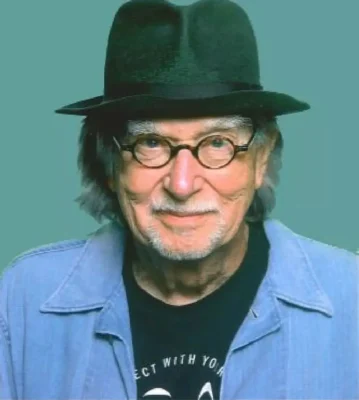Graduate Exhibition Design Program Celebrates 10th Anniversary

Getting its start
At its start in 2004, the Fashion Institute of Technology (FIT) Graduate Exhibition Design program, located in New York, experienced a difficult launch. This involved issues with the curriculum, the complexity of the exhibition program and determining how in-depth to study the exhibit design process. Taking two years to carve its niche, the program hit its stride following its first year.
Professor Frank Rispoli sought Exhibit Design + Producers Association’s (EDPA) support in the creation of a new master’s degree program in exhibit design. Conferring with the exhibition industry organization, program directors met with Gwen Parsons, senior vice president, Nomadic Display; Norm Friedrich, president, OCTANORM USA Inc.; Mark Johnson, CEO, Star Exhibits & Environments; and Dan Cantor, owner and CEO, Hamilton Exhibits. EDPA board members offered to review course outlines to ensure they met current industry needs and additionally promoted an unpaid internship program for enrolled students.
EDPA’s prior efforts with Drexel University, Auburn University, the University of Nevada, Las Vegas, to develop an exhibit design degree were met with political roadblocks until a collaboration with Rispoli led to a master’s degree at FIT.
“We immediately shifted our energy to support the program with the understanding that experienced EDPA members would provide the input for what students were taught. FIT agreed,” stated then-3D Exhibits senior vice president Larry Kulchawik, who is currently retired from the industry. “We wanted graduates who could step in running when hired as designers.”
Conducting an industry-wide survey, EDPA uncovered top characteristics desired by exhibit companies hiring designers – creativity, computer skills and communication skills. To incorporate these requirements into the curriculum, Norm Friedrich vowed to put the “D” back into EDPA, according to Kulchawik.
Additionally, exhibit companies had diversified beyond exhibits, expanding into other design areas such as museums, retail and product showrooms, and therefore, requiring exhibit design students to study a broader range of design.

With a fresh start, a new goal was initialized in 2005 for a holistic exhibition design program covering everything from proof of concept to design to implementation. By reviewing preliminary documents and offering critical advice for the program’s refresh, the EDPA members and industry veterans directly influenced how the courses were planned and taught.
“These industry experts were instrumental to the reorganization of the degree program. They’re not just giving FIT feedback, they’re making the program possible,” said Brenda Cowan, associate professor and chair of graduate exhibition design, FIT. “They helped determine what courses need to be taught, the duration of the program and how much we need to include in technical design.”
Now with a greater level of depth in the subject matter, students would be able to conduct research on interactive components or learn the history behind museum design, for example, in their exhibition design studies.
Architects Craig Berger, then associate chair of the visual presentation and exhibition design, SEGD; Jan Lorenc, cofounder, Lorenc + Yoo Design; and Lee H. Skolnick, founder, Lee H. Skolnick Architecture + Design Partnership, co-authored “What is exhibition design?”, a book extensively used to guide coursework within the Graduate Exhibition Design program. As a reference guide, the book encompasses the totality of exhibition including tradeshows, museum spaces, visitor centers, and even parks and recreation.
First consulted as an industry professional, Berger began his involvement with FIT as an advisor – later to turn into a full-fledged career in academia. Serving as chair of the undergraduate exhibition program since 2011, he now seeks to use the undergraduate curriculum as a conduit to bring students into graduate level studies.
“Through working in a leadership capacity in the graduate program, I was able to find my true calling in becoming an academic leader, which allowed me to take on the role as chair of undergraduate exhibition program,” realized Berger.
According to Brenda Cowan, Berger’s concurrent role as an industry professional and academic advisor helped to produce profession-wide benchmarks and criteria to differentiate the program from others.
After facilitating the course development, EDPA wanted to form ongoing, committed involvement. Adam Beckett, president and CEO of Derse, spearheaded the creation of the University Affiliation Programs for EDPA that worked directly with FIT. The program is co-chaired by Mark Johnson and Norm Friedrich. Now built into the curriculum is a mentorship program pairing each student with a personal industry advisor throughout the duration of their studies.
“The commitment was for helping the industry create a better product in the area of creative services. Also, I really enjoy giving back and seeing the young talent prosper,” commented Johnson.
Friedrich, Kulchawik and calan communications Founder and Partner Alan Cordial, among others, became involved in the EDPA Foundation’s annual student design competition. Kulchawik chaired the Academic Leadership Committee for EDPA in 2005, working with the EPDA Foundation to eventually offer scholarship funding, including the EDPA Scholarship that awards $2,000 annually to an exhibition design student.
“I see trained exhibit designers as the neurosurgeons in the world of tradeshow marketing – the top of the food chain for connecting the world through tradeshows and events,” commented Kulchawik.
Leading the way
Four years after the program established its foundation, Brenda Cowan, whose background in museum and exhibit design complemented the academic mission, assumed the role of chair.
“It is interesting to know that these prominent industry leaders created a graduate program’s curriculum and launched it, and that the program has grown and flourished, seen significant advancements in its first 10 years, and continues to be a part of the ever-growing network of professionals from the EDPA, and other organizations as well,” said Cowan.
Directing a leader-oriented, narrative program, the exhibition industry professional and associate professor helped graduate students develop proofs of concept and presentations along with design work.
“Brenda developed the structure and leadership role maintained at the school today,” Berger commended.
“Brenda’s enthusiasm and leadership kept the candle burning bright, and has propelled the program forward. 10 years forward!” lauded Kulchawik.

Crediting the original EDPA members who helped shape the program into its current state, Cowan emphasized that key contributors like Mark Johnson, Norm Friedrich and Larry Kulchawik have continued to participate through the program’s evolution – from its rocky start to today.
“Being a part of the very beginning, talking about the industry from the first-person point of view and staying engaged throughout the year – providing critiques, devoting time to be co-chairs – helped us stay current and relevant, and helped the students achieve their benchmarks,” said Cowan.
“The whole program has been reexamined, revisited to be totally fresh. Mark [Johnson], Norm [Friedrich] and Larry [Kulchawik] are trying to make sure the students we graduate will be taking the next step in the industry. The reality is they want the industry to survive and be vital. They want to produce graduates who have a very strong, fundamental knowledge of the industry.”
Adding that the group’s level of involvement in the academic program given their full-time businesses and leadership positions is incredibly rare in academia, FIT has benefitted from the combined years of experience and expertise.
“They’re on the frontlines of large exhibit companies; they know the whole sweep of the industry and all of its elements,” Cowan asserted. “Having industry professionals from top leadership positions who are so selfless and eager to spend time creating a curriculum is really unusual in an academic program.”

As part of the program, Cowan regularly invites professionals with a deep understanding of the industry as speakers and advisors to graduate students studying exhibition design, including Mark Johnson, a past president of EDPA.
“FIT has a long history of being committed to its students and the industries it serves. Over the years the program has grown and developed into a great program that is internationally attended, that continues to work hard to serve the exhibit and event industry,” Johnson boasted. “The dedication of the faculty and students are inspirational, and I am proud to be even a small part of the program.”
studioMUSarx LLC Principal Joe Nicholson AIA, NCARB, IDSA, serves as a student thesis juror for Master of Arts degree students.
“Following an initial evaluation of the program in 2004, it was the rewarding encounters with students who are curious, creative and dedicated that continues to shape my positive perception of the exhibition design program at FIT,” said Nicholson.
“The students come from various work backgrounds and countries to engage in a collaborative studio approach to exhibit design. In the process, they encounter lectures from a wide range of professionals associated with the practice of exhibit design. This level of exposure, along with their studio assignments, informs their desire to embrace the field of exhibit design in meaningful ways that will benefit both commercial enterprises and museums. As a result, their creative skills coupled with a determination to excel have led to a consistently high level of student work as exhibited annually by their final thesis projects.”
A decade to celebrate
“More than 150 industry professionals – including capstone judges and individual companies – have provided their expertise over the 10 years of the program. They’ve given workshops, presentations, provided critiques, etc.,” stated Cowan. “We’re not just reading books; Mark [Johnson] and Norm [Friedrich] in particular make sure that we keep our hands dirty. They understand and are dedicated to the value of rolling up your sleeves and doing work.”
To further enhance educational offerings for graduate students, Johnson, Friedrich and Cowan plan to expand the curriculum to include studies on overseas practices. An international travel seminar in global professional practices will be hosted by OCTANORM in Germany in January 2016.
Along with teaching exhibition design, the program cultivates leadership skills to prepare students entering the industry.
“Our goal is not to reflect the industry, but to develop a process or approach found in the industry and take it to the next level. We’re fostering design pioneers not just to be workers in the firm, but to be leaders, which is very different than what exists in most academic programs,” Berger shared.
With in-depth knowledge of exhibition design and guidance from its industry experts, graduating FIT students are poised to lead the future world of exhibition design.





























